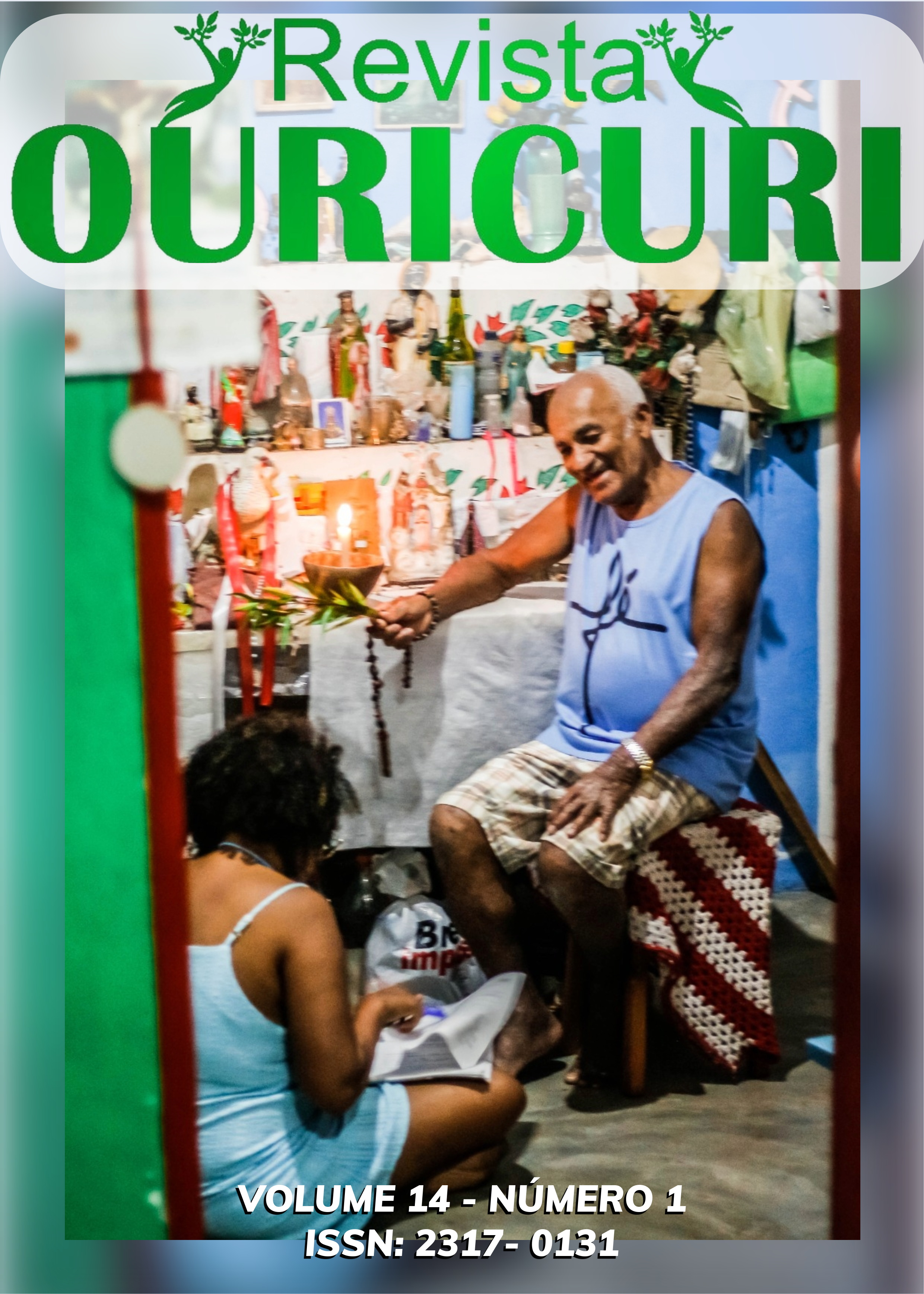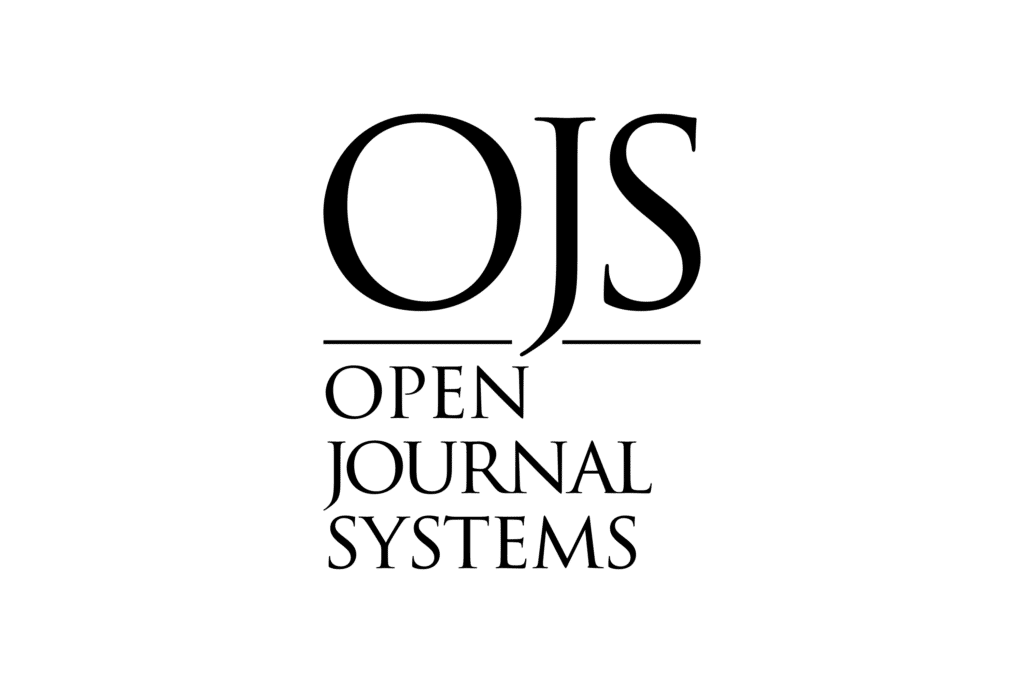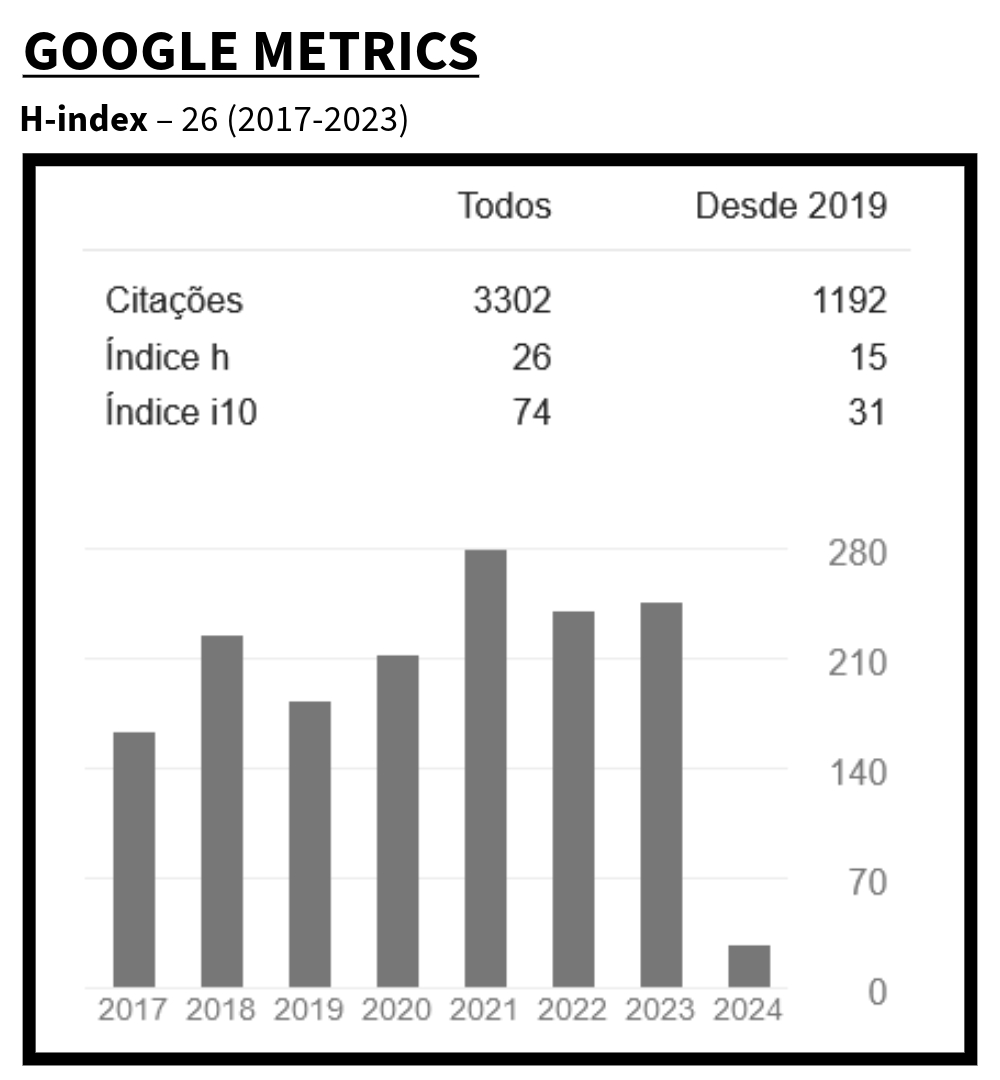Effects of The use of Ayahuasca In religious ceremonies on the emotional aspects of the participant
DOI:
https://doi.org/10.59360/ouricuri.vol14.i1.a18806Keywords:
saúde mental; , ayahuasca; , n, n dimetiltriptamina; , sentimentos; , espiritualidadeAbstract
To analyze the therapeutic effects of ayahuasca on emotional aspects in individuals who use the brew in a religious context. This qualitative, observational, and exploratory study was conducted between March and April 2021. The study sample consisted of 10 participants who were adherents of the Santo Daime ayahuasca religion, affiliated with the Céu de Francisco Spiritual Center. Among them, five were male and five were female, with ages ranging from 21 to 42 years, all residing in the city of Paulo Afonso, Bahia. Participant observation, field diaries, and semi-structured interviews were employed to collect data. Data analysis was performed through content analysis. The majority of participants reported positive emotional experiences after using ayahuasca. These positive feelings extended beyond individual benefits, encompassing improvements in interpersonal relationships outside the religious context. Participants gained a deeper understanding of the therapeutic effects of ayahuasca, identifying significant changes in their emotions and how they confronted daily challenges. These changes were accompanied by improvements in interpersonal relationships, self-awareness, and spirituality. This study revealed a positive bias in the results due to the nature of the sample, attracting participants who experienced therapeutic benefits with ayahuasca. It is important to note that limitations include the absence of reports from individuals who experienced negative effects of ayahuasca due to the nature of the sample. Furthermore, the qualitative nature and convenience sampling of this study hinder the generalization of results. Nevertheless, these qualitative findings provide a foundation for future comparative quantitative studies that can confirm and expand upon the results of this study.
Downloads
References
Aguiar, R. P. A. Jovens da União Vegetal: práticas ritualísticas e vida comunitária no convívio com as drogas [recurso eletrônico] 2016. 175f. Dissertação (mestrado acadêmico) – Universidade Estadual do Ceará, Centro de Humanidades, Mestrado Acadêmico em Políticas Públicas e Sociedade, Fortaleza, 2016. Disponível em: http://ciencia.udv.org.br/wp-content/uploads/2019/ 05/2014_Rosileuda.pdf. Acesso em: 20 de abr. 2023.
Araújo, D. B. Neuroimagens e efeitos antidepressivos da ayahuasca. Seminário de neurociências, 2020. Disponível em: https://www.youtube.com/watch?v=je22ocp-hz8. Acesso em: 30 de mai. 2022.
Barbosa, P. C.; Mizumoto, S.; Bogenschutz, M. P.; Strassman, R. J. Health status of ayahuasca users. Drug Testing and Analysis, 4(7-8) 601-609, Jul-Aug. 2012. Doi: 10.1002/dta.1383.
Bardin, L. Análise de conteúdo. 70. ed. São Paulo: Casa de Ideias, 2016.
Bomfim, J. D. Diálogos sociais do JGB. Jornal Grande Bahia. Disponível em: https://www.jornalgrandebahia.com.br/2020/07/sociologo-juarez-duarte-bomfim-aborda-o-tema-ayahuasca-em-serie-de-tres-de-entrevistas-para-o-programa-dialogos-sociais-do-jgb/. Acesso em: 10 jul. 2022.
Brasil. Ministério da Justiça e Segurança Pública. Conselho Nacional de Políticas sobre Drogas (CONAD). Resolução n. 1, de 25 de janeiro de 2010. Brasília: Casa Civil. Gabinete de Segurança Institucional, 2010.
Bravo, G. L.; Grob, C. S. Hallucinogens - What's in a name? Or defending the indefensible. Bull multidiscip assoc psychedelic stud, 13(1):55-6, 2003. Disponível em: https://maps.org/news-letters/v13n1/13155bra.html. Acesso em 20 de jul. 2022.
De Araújo, S. A.; Prata, O. M.; Nascimento, J, F. E.; Pessôa, N. R. S.; Monteiro, L. S.; Tatmatsu, D. B. A influência da ayahuasca na resolução de problemas com ratos wistar. Revista Brasileira de terapia comportamental e cognitiva. 21(3), 2019.
Dos Santos, R.G.; Balthazar, F. M.; Bouso, J. C.; Hallak, J. E. The current state of research on ayahuasca: a systematic review of human studies assessing psychiatric symptoms, neuropsychological functioning, and neuroimaging. J Psychopharmacol. 30(12):1230-1247, Dec. 2016. Doi: 10.1177/0269881116652578.
Escobar, J. A. C. Ayahuasca e saúde: efeitos de uma bebida sacramental psicoativa na saúde mental de religiosos ayahuasqueiros. 2012. 232 f. Tese (doutorado) – Universidade Federal de Pernambuco, CFCH. Programa de Pós-graduação em Psicologia Cognitiva, 2012. Disponível em: https://repositorio.ufpe.br/handle/123456789/11258. Acesso em: 25 de mar. 2022.
Fotiou, E.; Gearin, A. K. Purging and the body in the therapeutic use of ayahuasca. Soc Sci Med. 239:112532, Oct. 2019. Doi: 10.1016/j.socscimed.2019.112532.
Garcia-Romeu, A.; Kersgaard, B.; Addy, P. H. Clinical applications of hallucinogens: a review. Experimental and Clinical Psychopharmacology, 24(4), 229–268, 2016.
Ddoi.org/10.1037/pha0000084.
Goodman, L. S.; Gilman, A. As bases farmacológicas da terapêutica. 11. ed. Rio de Janeiro: Mcgraw-Hill, 2007.
Hamill, J.; Hallak, J.; Dursun, S. M.; Baker, G. Ayahuasca: psychological and physiologic effects, pharmacology and potential uses in addiction and mental illness. Current Neuropharmacology, 17(2), 108-128, 2019.
Johnson, M.; Richards, W.; Griffiths, R. Human hallucinogen research: guidelines for safety. J Psychopharmacol. 22(6):603-620, Aug. 2008. Doi: 10.1177/0269881108093587.
Labate, B. C. A literatura brasileira sobre as religiões ayahuasqueiras. In: Labate, B. C.; Araújo, W. S. (Org.). O uso ritual da ayahuasca. Campinas: Mercado de Letras; São Paulo: Fapesp, 2002.
Labate, B. C.; Feeney, K. Ayahuasca and the process of regulation in Brazil and internationally: implications and challenges. International Journal of Drug Policy, 23(2):154-6, Mar. 2012. Doi: 10.1016/j.drugpo.2011.06.006.
Labate, N. C. A reinvenção do uso da ayahuasca nos centros urbanos. Campinas: Mercado de Letras; São Paulo: Fapesp, 2004.
Loizaga-Velder, A.; Pazzi, A. L. Therapist and patient perspectives on ayahuasca-assisted treatment for substance dependence. In: Labate, B. C.; Cavnar, C. (Edits.). The therapeutic use of ayahuasca. Berlin: Heidelberg: Springer-Verlag, 2014.
Luna, L. E. Indigenous and mestizo use of ayahuasca. An overview. In: Santos, R. G. (Edi.). The ethnopharmacology of ayahuasca. Kerala: Transworld Research Network, 2011.
Mabit, J.; Giove, R.; Veja, J.; Takiwasi. The use of amazonian shamanism to rehabilitate drug addicts. In: Winkelman, M.; Andritzky, W. (Edits). Yearbook of cross-cultural medicine and psychotherapy. Berlin: Verlag Für Wissenschaft Und Bildung; 1996.
Maia, L. O.; Daldegan-Bueno, D.; Wießner, I.; Araujo, D. B.; Tófoli, L. F. Ayahuasca's therapeutic potential: what we know - and what not. Eur Neuropsychopharmacol, 66, 45-61, jan. 2023. Doi: 10.1016/j.euroneuro.2022.10.008.
Mercante, M. S. Ayahuasca, dependência química e alcoolismo. Ponto Urbe, 5. 2009. Disponível em: http://journals.openedition.org/pontourbe/1345. Acesso em 20 de ago. 2022. Doi:10.4000/pontourbe.1345.
Moreira, P; MacRae, E. Eu venho de longe: Mestre Irineu e seus companheiros. Salvador, EDUFBA, 2011.
Oliveira, M. N. M. A thematic analysis of pre- and post-ceremony factors related to self-reported therapeutic value of ritualized ayahuasca use among canadians [thesis]. Vancouver: Adler University, 2018.
Osório, F. L.; Sanches, R. F.; Macedo, L. R.; Santos, R. G.; Maia-de-Oliveira, J. P.; Wichert-ana, L., et al. Antidepressant effects of a single dose of ayahuasca in patients with recurrent depression: a preliminary report. Braz J Psychiatry .37(1):13-20, Jan-Mar. 2015. Doi: 10.1590/1516-4446-2014-1496.
Palhano-fontes, F.; Barreto, D.; Onias, H.; Andrade, K. C.; Novaes, M. M.; Pessoa, J. A., et al. Rapid antidepressant effects of the psychedelic ayahuasca in treatment-resistant depression: a randomized placebo-controlled trial. Psychol Med. 49(4):655-663, Mar. 2019. Doi: 10.1017/S0033291718001356.
Riba, J.; Barbanoj, M. J. Bringing ayahuasca to the clinical research laboratory. Journal of Psychoactive Drugs, 37(2), 219–230, 2005. https://doi.org/10.1080/02791072.2005.10399804.
Rodrigues, A. V.; Almeida, F. J.; Vieira-Coelho, M. A. Dimethyltryptamine: endogenous role and therapeutic potential. J Psychoactive Drugs. 51(4):299-310, Sep-Oct. 2019. Doi: 10.1080/02791072.2019.1602291.
Santos, R. A. A híbrida Barquinha: uma revisão da história, das principais influências religiosas e dos rituais fundamentais. 2017. 149 f. Dissertação (Mestrado em Ciência da Religião) - Programa de Estudos Pós-Graduados em Ciência da Religião, Pontifícia Universidade Católica de São Paulo, São Paulo, 2017.
Sarris, J. et al. Uso de ayahuasca e efeitos relatados nos sintomas de depressão e ansiedade: um estudo transversal internacional de 11.912 consumidores. Journal of Affective Disorders Reports, 4( 2), mar. 2021.
Schenberg, E. E., Tófoli, L. F., Rezinovsky, D., Silveira, D. X. D. Translation and cultural adaptation of the States of Consciousness Questionnaire (SOCQ) and statistical validation of the Mystical Experience Questionnaire (MEQ30) in Brazilian Portuguese. Archives of Clinical Psychiatry, São Paulo, 44(1), 1–5, jan. 2017. https://doi.org/10.1590/0101-60830000000105.
Shanon, B. Moments of Insight, Healing, and Transformation: A Cognitive Phenomenological Analysis. In: Labate, B.C.; Cavnar, C. (Eds.) The Therapeutic Use of Ayahuasca. Springer, Berlin, Heidelberg, 2014. https://doi.org/10.1007/978-3-642-40426-9_4.
Strassman, R. J. DMT: a molécula do espírito. Brasília, Pedra Nova, 2019. 396 p.
Studerus, E.; Kometer, M.; Hasler, F.; Vollenweider, F. X. Acute, subacute and long-term subjective effects of psilocybin in healthy humans: a pooled analysis of experimental studies. Journal of Psychopharmacology, 25(11) 1434–1452, 2011. Doi: 10.1177/0269881110382466.
Wolff, T. J.; Ruffell, S.; Netzband, N.; Passie, T. A phenomenology of subjectively relevant experiences induced by ayahuasca in Upper Amazon vegetalismo tourism. Journal of Psychedelic Studies, 3(3), 295-307, 2019. Doi: 10.1556/2054.2019.007.
Published
How to Cite
Issue
Section
License
Copyright (c) 2024 Felipe Teixeira

This work is licensed under a Creative Commons Attribution-NonCommercial 4.0 International License.
Authors who publish in this journal agree to the following terms:
a) Authors maintain copyright and grant the magazine the right of first publication, with the work simultaneously licensed under the Creative Commons Attribution License which allows sharing of the work with recognition of authorship and initial publication in this magazine.
b) Authors are authorized to enter into additional contracts separately, for non-exclusive distribution of the version of the work published in this journal (e.g., publishing in an institutional repository or as a book chapter), with recognition of authorship and initial publication in this journal.
c) Authors are allowed and encouraged to publish and distribute their work online (e.g. in institutional repositories or on their personal page) as this can increase the impact and citation of the published work (See The Effect of Open Access).













 B1 (2017-2020)
B1 (2017-2020)



















